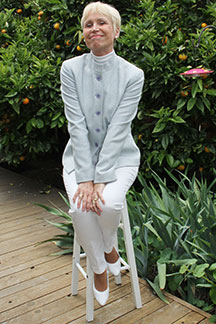Ernst Werner Siemens, German industrialist, researcher and inventor, was a self-made man. Having been born in 1816 as the fourth of 14 children in a tenant farmer family precluded his pursuit of extensive higher education. But this disadvantage did not keep Siemens from turning his dreams into reality. Today’s Siemens AG is the largest engineering- and electronics company in Europe. The company offers products and services relative to construction, energy, lighting, transportation, logistics and medicine. The firm’s corporate headquarters is located in Munich. Siemens AG has operations in close to 190 countries and owns approximately 285 production and manufacturing facilities. Werner von Siemens passed away in 1892.
Siemens – the industrialist and inventor
To become an engineer, Siemens needed an education. To that end he joined the Prussian army and soon had acquired sufficient knowledge to greatly improve the army’s communication system. For one thing, he constructed a point telegraph that was far superior to anything the army had used before. Even before he left the army at the age of 31, he had formed a partnership with master mechanic Johann Georg Halske. In 1848, one year before he left the army, the Siemens & Halske Telegraph Construction Company built the first long-distance telegraph line in Europe. It covered 310 miles from Berlin to Frankfurt am Main.
In 1879, the firm presented the first electric railway at the Berlin Trade Fair, and the first electric streetlights were installed in Berlin’s Kaisergalerie. In 1880, Siemens built the first electric elevator in Mannheim, and in 1881 the world’s first electric streetcar went into service in Berlin-Lichterfelde.
Siemens – the researcher
Ernst Werner Siemens also pursued intensive scientific research. In 1866 he made what was probably his most important contribution to electrical engineering when he reported having discovered the dynamo-electric principle.
The firm goes International
Thereafter, business opportunities multiplied. Two years later, he had his younger brother, Carl Wilhelm Siemens, open a branch office in London, England. In 1855, another brother, Carl Heinrich Siemens, opened a company branch in St. Petersburg, Russia. In 1867, the company completed the Indo-European telegraph line from Calcutta to London. Because of his many achievements, German Emperor Friedrich III raised Werner Siemens to nobility in 1888. He was henceforth known as Werner von Siemens.
Siemens – social reformer
Siemens was also far ahead of his time with numerous social initiatives. In 1866, he first issued an inventory premium. It was the forerunner of today’s profit sharing plans. Six years later, he introduced a company pension plan, which included a widows and orphans fund for surviving dependents. When asked why he invested so much in his employees, he replied that it reinforced employees’ loyalty to the company and, therefore, should be considered a “healthy self interest.”
For a sneak peek at the first 20+ pages of my memoir, Walled-In: A West Berlin Girl’s Journey to Freedom, click “Download a free excerpt” on my home page and feel free to follow my blog about anything German: historic and current events, people, places and food.
Walled-In is my story of growing up in Berlin during the Cold War. Juxtaposing the events that engulfed Berlin during the Berlin Blockade, the Berlin Airlift, the Berlin Wall and Kennedy’s Berlin visit with the struggle against my equally insurmountable parental walls, Walled-In is about freedom vs. conformity, conflict vs. harmony, domination vs. submission, loyalty vs. betrayal.














